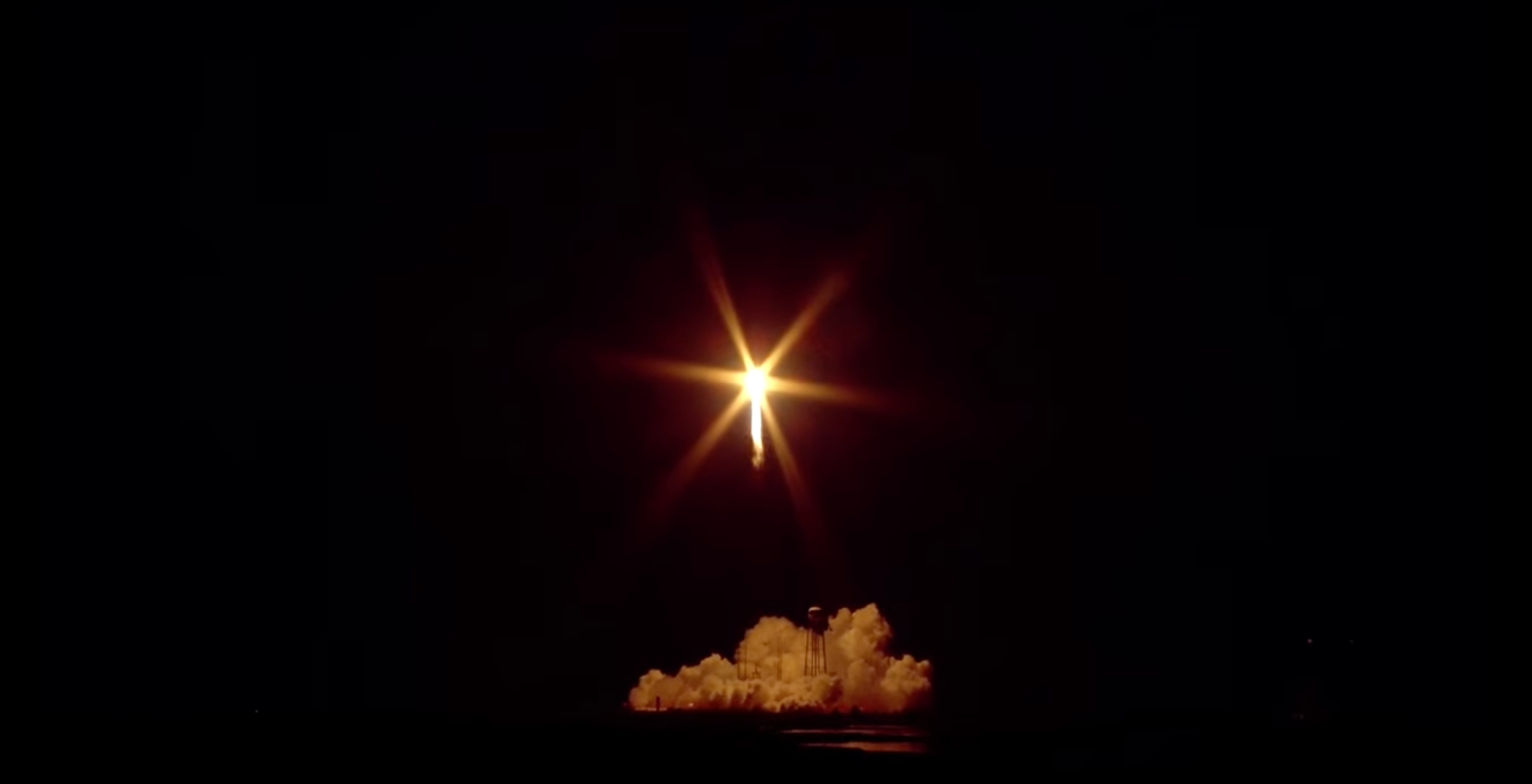
Yesterday evening, Northrop Grumman successfully launched its final Antares 220+ rocket from Wallops Island, Virginia. The NG-19 mission carried Northrop’s Cygnus spacecraft to the International Space Station, transporting essential supplies such as food, experiments, and other cargo for the crew.
At precisely 8:31 P.M. ET, the Antares rocket lifted off from Pad 0A, located adjacent to Rocket Lab’s LC-2. Powered by two RD-181 engines, the significantly larger Antares rocket started Cygnus’ journey toward the ISS. The Cygnus spacecraft, named after NASA astronaut Laurel Clark, was loaded with over 8,200 pounds or cargo.
Shortly after liftoff and the separation of the payload fairing, the Antares rocket ignited its solid rocket second stage. This feature of Northrop’s rocket is unique, the Castor 30XL rocket stage burns HTPB and aluminum propellants similar to the strap-on boosters used on ULA’s Atlas rocket. This second stage propelled the Cygnus into a low Earth orbit close enough to the ISS to prepare for a rendezvous.
The NG-19 flight is executed under NASA’s Commercial Resupply Services 2 contract, designed to transport cargo to the ISS. In addition to SpaceX and Sierra Space, this contract ensures a continuous supply of new experiments and food for the station’s crew until its scheduled retirement in 2030.
A once unique capability of the Cygnus and Antares rocket is the ability to accommodate late-load cargo, even just hours before launch. SpaceX also incorporated this feature in the Dragon 2 spacecraft. For the NG-19 mission, NASA included a “surprise frozen treat” for the current ISS crew. I’m sure creating anticipation among those onboard as they await to see what NASA sent them.
The conclusion of Antares’ foreign products
As previously mentioned, the NG-19 launch marks the final flight of this specific Antares rocket variation. Similar to the transition from the 100 to the 200 series rockets, the upcoming 300 series will feature a new set of engines and a second stage, manufactured by Firefly.
This modification comes in light of Russia’s ongoing invasion of Ukraine, as some components of the Antares rocket were sourced from both factions. Due to the current situation, the supply of certain items, such as the first stage’s engines from Russia and booster from Ukraine, has been depleted, making NG-19 the last mission with available stock.
Despite this challenge, Northrop’s CRS-2 contract must continue. While the company, alongside Firefly, is working on developing the new booster, future Cygnus missions will be conducted using SpaceX’s Falcon 9 rocket. Meaning SpaceX will become the exclusive means of transporting crew and cargo to the ISS from the United States.
For now, SpaceX enjoys a de facto monopoly on Western ISS access. However, we expect Boeing and Sierra Space will join the fray within the next year, providing their crew and cargo transport offerings. Although I’m getting some déjà vu, with that statement.
FTC: We use income earning auto affiliate links. More.




Comments